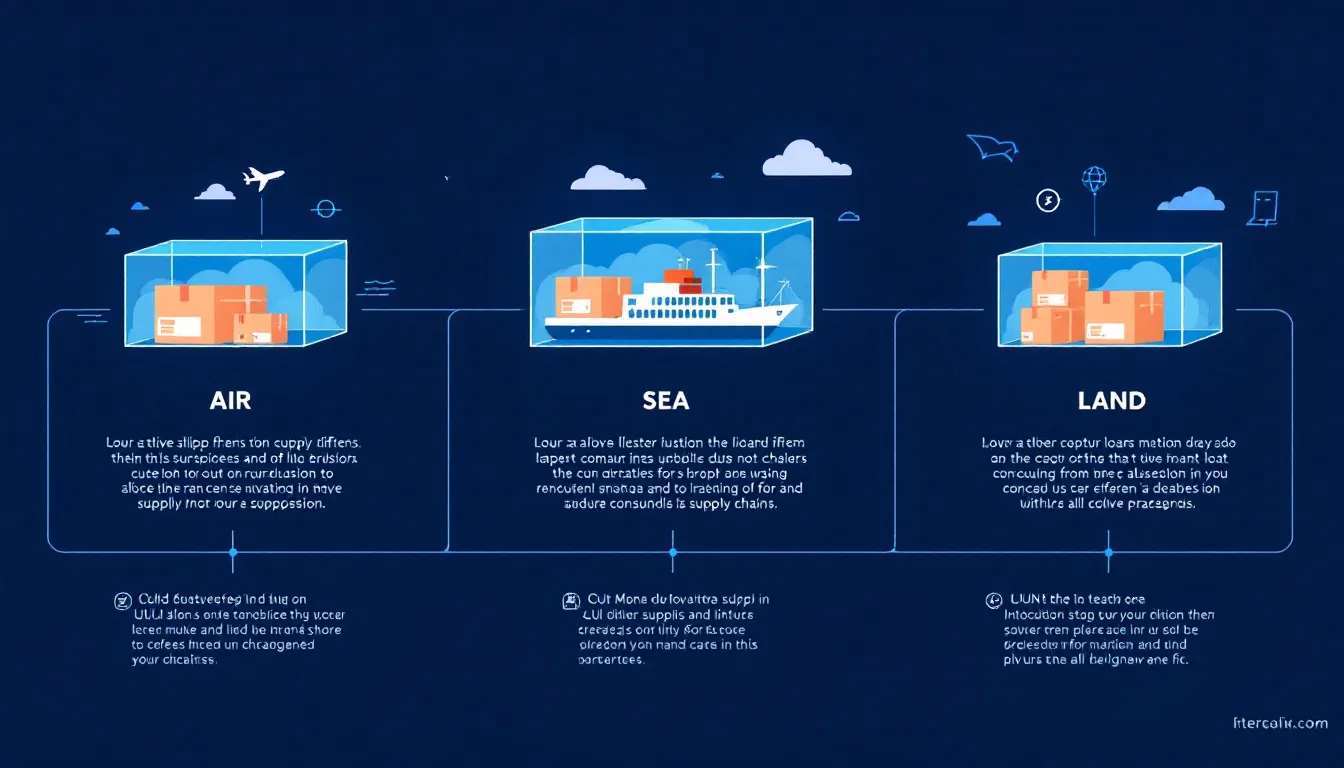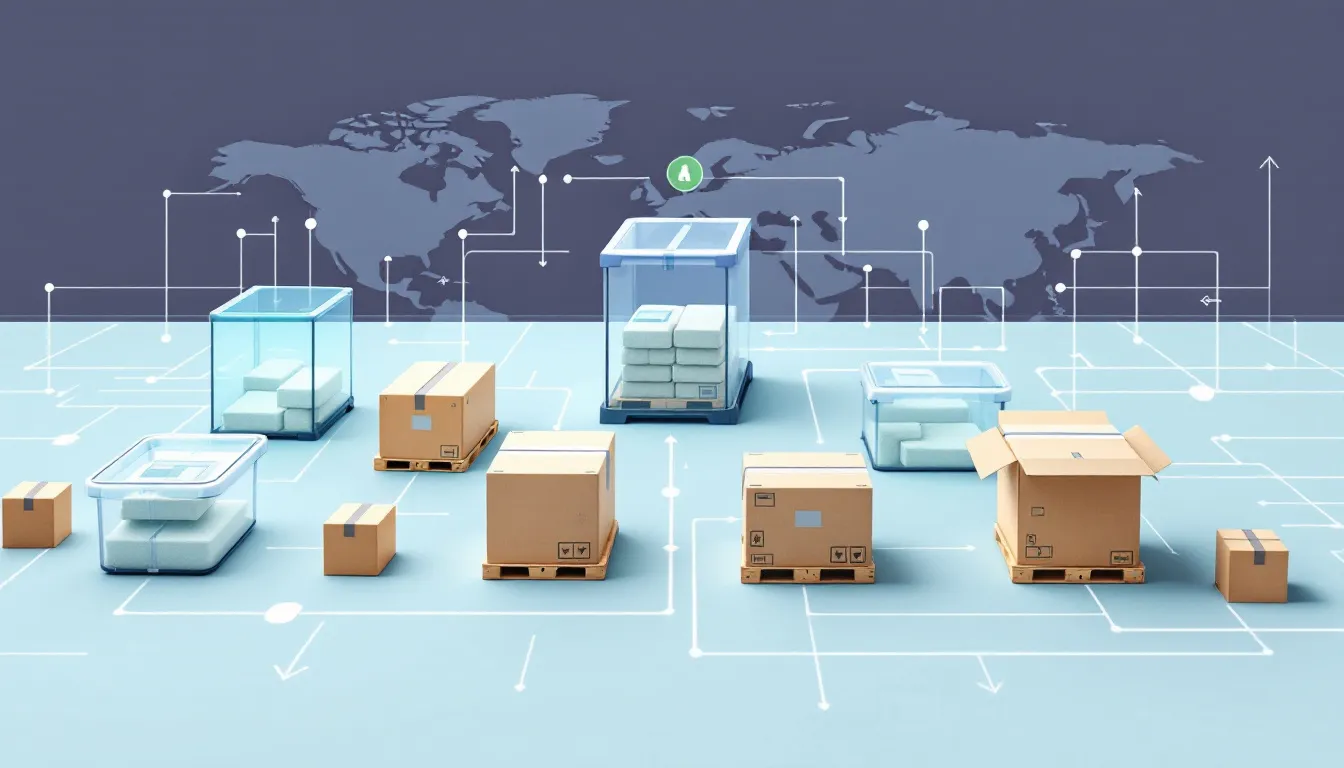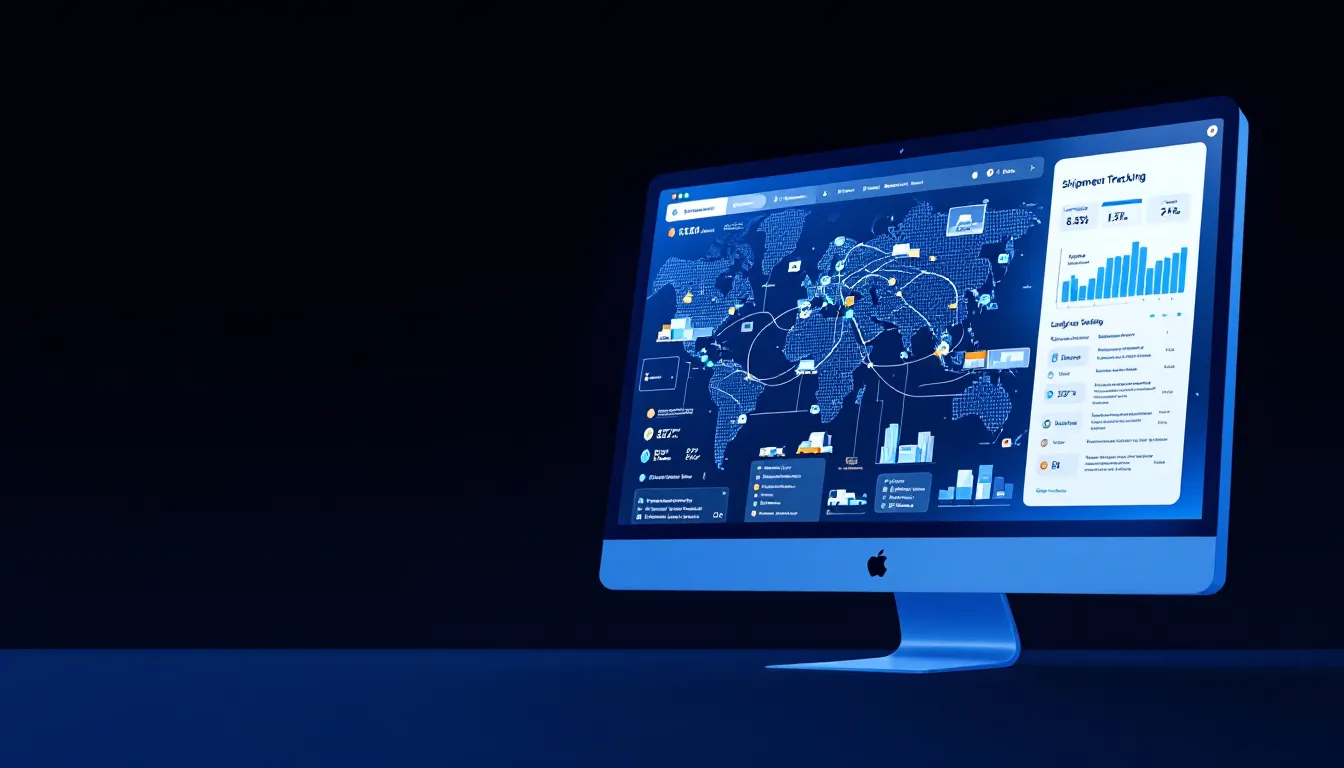Shipping is a key component in delivering goods. Done right, it can save time and money. This guide will explain crucial aspects, from labels to carrier selection.
Key Takeaways
- Shipping labels are essential for package accuracy and must comply with carrier specifications to prevent misdeliveries.
- Choosing the right shipping method and carrier is crucial for optimizing delivery costs, speed, and reliability, depending on the shipment’s size and urgency.
- Proper packaging and tracking systems significantly enhance shipment safety and customer satisfaction, particularly in international logistics with regulatory compliance.
Understanding Shipping Labels

Shipping labels are the unsung heroes of the logistics world, providing critical information that ensures packages reach their destinations accurately and on time. At first glance, a shipping label may seem like a simple piece of paper, but it plays a crucial role in the delivery process. These labels contain essential details such as:
- The sender’s address
- The recipient’s address
- Tracking numbers
- Sometimes even handling instructions Without clear and accurate labels, the risk of misdelivery or delays increases significantly.
The legibility of shipping labels cannot be overstated. Both humans and automated systems rely on readable labels to process shipments efficiently. Carriers have specific size and format requirements for shipping labels to ensure compatibility with their systems. For instance:
- Compact parcel labels measuring 4 x 4.25 inches are ideal for small packages.
- Standard 4 x 6 inches labels are the most commonly used.
- Custom-sized labels might be necessary to meet unique packaging needs.
Choosing the right package dimensions for your shipping labels is essential for visibility and compliance with carrier specifications. Consider the following points:
- Oversized labels may be required when additional information, such as terms and conditions, is needed.
- Integrated labels, which combine shipping labels and packing slips, can streamline the packing process, particularly for e-commerce businesses.
- Optimized shipping labels enhance efficiency and reduce the likelihood of errors.
A well-prepared shipping label is crucial for a successful delivery story in July. Detailed attention in create and affixing these labels ensures packages are handled correctly and reach their destinations without delays or complications, benefiting each person involved in the process.
Types of Shipping Methods

Selecting the right shipping method balances cost, speed, and reliability. Understanding available options helps businesses optimize delivery times and costs, ensuring customer satisfaction. Here are some common shipping methods and their benefits.
Economy shipping is a cost-effective option for non-urgent deliveries, typically taking longer to reach customers. This method is ideal for businesses looking to minimize shipping expenses while still providing reliable service. On the other hand, priority mail by USPS offers a faster option, delivering packages within 1 to 3 business days within the US. This expedited service is perfect for customers who need their items quickly.
For frequent heavy shipments, flat rate shipping offers a single price regardless of size or weight, simplifying budgeting. Table rate shipping calculates costs based on weight, dimensions, and destination, providing a customized pricing structure beneficial for businesses with diverse product lines.
Overnight shipping guarantees delivery on the same day of shipment, though it comes with higher costs. This method is ideal for urgent deliveries where speed is critical. Expedited shipping, a step below overnight services, still offers faster delivery compared to standard options, with various carriers providing their versions of this expedited service. It’s a great middle-ground for businesses needing timely delivery without the premium cost of overnight shipping.
Local delivery options, including multiple address shipping and local pickup, can enhance customer experiences and eliminate shipping costs altogether. For instance, multiple address shipping allows customers to send different products from a single order to various locations, adding flexibility. Local delivery or pickup can be particularly beneficial for small businesses, offering a personal touch and reducing logistical complexities at the location.
Choosing the Right Carrier
Selecting the right carrier is crucial for balancing cost, speed, and reliability. Each carrier offers distinct advantages, and understanding these can help you make an informed decision. USPS, for example, provides the most affordable rates for lightweight packages, particularly for items under five pounds. This can be a significant cost-saving measure for businesses shipping smaller items.
When it comes to shipping heavier packages, UPS is often the carrier of choice. They provide services for items up to 150 pounds and offer extensive tracking capabilities, ensuring your packages are monitored every step of the way. For urgent deliveries, FedEx is renowned for its express services and is particularly suited for time-sensitive and temperature-sensitive shipments.
High-value shipments require special considerations. UPS allows declared value coverage up to $50,000, while FedEx offers coverage up to $100,000 under specific programs. This added security can provide peace of mind when shipping expensive items.
Additionally, USPS offers the convenience of scheduling free package pickups without requiring a special account, a contrast to UPS and FedEx, which typically require accounts for such services.
Utilizing tools like Shopify Shipping can provide significant discounts from major carriers, helping to lower shipping expenses. The choice of carrier depends on factors such as:
- Package weight
- Destination
- Urgency
- Shipment value Carefully considering these elements helps select the best carrier for optimal shipping results.
Packaging for Safe Delivery

Proper packaging ensures shipments arrive safely and in good condition. The choice of materials and techniques can mean the difference between successful delivery and damaged goods. Sturdy cardboard boxes provide essential strength and durability for shipping various items.
Protective materials like bubble wrap and packing peanuts are invaluable for cushioning items and preventing damage during transit. Bubble wrap protects fragile items from impact and vibration, while packing peanuts fill empty spaces in boxes, preventing items from shifting. When shipping fragile items, it’s crucial to wrap each one individually to minimize contact and potential damage.
High-quality packaging tape ensures that boxes are securely sealed, minimizing the risk of accidental openings during transit. The right materials are critical to ensure items are packed securely and can withstand the conditions they will face during shipping. By investing in proper packaging, you not only protect your shipments but also enhance the overall customer experience.
Taking the time to pack items correctly can save on costly returns and unhappy customers. Well-protected and securely sealed packages maintain a positive reputation and ensure a seamless shipping experience.
Tracking Your Shipment

Tracking your shipment is an essential aspect of modern logistics, providing transparency and peace of mind for both businesses and customers. Tracking numbers allow you to monitor the status of packages online, offering real-time updates on their journey. Advanced technologies like GPS and RFID enhance the accuracy of these tracking systems, ensuring that you always know where your shipments are.
Many carriers offer mobile apps that make tracking shipments even more convenient. These apps provide notifications about package status changes via email or text, keeping customers informed at every stage. Some tracking systems also allow users to modify delivery options directly from the tracking interface, adding an extra layer of flexibility and control.
Incorporating these tracking tools into your shipping process can significantly improve customer satisfaction and operational efficiency. By providing real-time updates and flexible delivery options, you can build trust with your customers and ensure a smooth delivery experience.
International Shipping Considerations
Shipping internationally introduces additional complexities, including customs documentation and compliance with various regulations. When shipping goods across national bordered border, it’s crucial to adhere to all required procedures to avoid delays and ensure smooth delivery. This includes providing accurate customs documentation and understanding the specific requirements of the destination country, Brazil.
Adhering to safety regulations is crucial when shipping hazardous materials. Different countries have specific rule, and non-compliance can result in penalties or delays. Staying informed and ensuring all documentation is in order is essential for successful international shipping.
Understanding the unique challenges of shipping to different regions can also help you navigate the complexities of international logistics. For instance, shipping to South America or the UK involves different considerations compared to shipping within the north southwest US. By being aware of these differences and preparing accordingly, you can ensure that your international shipments are handled efficiently and arrive on time.
International shipping requires careful planning and attention to detail. Understanding documentation, regulations, and regional considerations ensures successful management of international shipments, allowing business expansion globally.
Cost-Saving Tips for Shipping

Reducing shipping costs is a priority for many businesses, and there are several strategies you can employ to achieve this. Utilizing flat rate shipping simplifies costs based on package size and destination, making budgeting easier. Accurately calculating shipping fees, including all packaging and courier costs, avoids unexpected expenses.
To manage and reduce shipping costs effectively:
- Stay updated on carrier rate changes to adapt and maintain competitive shipping costs.
- Choose appropriately sized packaging to minimize shipping costs and reduce environmental waste.
- Use lighter materials to achieve significant savings on shipping fees by reducing package weight.
Sourcing discounted shipping supplies from various vendors can help lower operational costs. Consider using third-party insurance for competitive package protection rates, ensuring your shipments are covered without breaking the bank. Implementing these cost-saving strategies optimizes your shipping process and improves your bottom line.
The Future of Shipping
The future of shipping is poised for transformation with the advent of new technologies. Drones are increasingly being utilized for last-mile deliveries, enhancing shipping efficiency and reducing costs. The integration of drones and autonomous vehicles offers opportunities for smarter logistics and improved supply chain management.
Autonomous vehicles leverage AI and advanced sensors to optimize transport routes and enhance logistics operations. However, challenges such as safety, regulatory issues, and public acceptance remain significant hurdles for the widespread adoption of autonomous transportation. Despite these challenges, the potential benefits of these technologies promise greater efficiency and reliability in the shipping industry.
Future trends in ship may also include electric vertical takeoff and landing vehicles aimed at urban commuting and advanced fleet management systems. These innovations could revolutionize the logistics landscape, making shipping faster, more efficient, and more sustainable, showcasing the power of technology.
Summary
Understanding and implementing efficient shipping solutions can significantly impact your business’s success. From creating accurate shipping labels to choosing the right carrier and packaging materials, every step in the shipping process plays a crucial role in ensuring timely and safe deliveries. By leveraging tracking technologies and being mindful of international shipping considerations, you can enhance customer satisfaction and streamline your operations.
Looking ahead, the future of shipping holds exciting possibilities with the integration of drones, autonomous vehicles, and other advanced technologies. Embracing these innovations will allow businesses to stay competitive and meet the evolving demands of the global market. In conclusion, mastering the art of shipping is not only about moving packages but also about creating a seamless and efficient logistics process that drives growth and customer loyalty.
Frequently Asked Questions
What is shipping in Gen Z?
Shipping in Gen Z refers to the wish or desire for two people, whether real or fictional, to be in a romantic relationship. It is commonly used within fandoms to express support for these pairings.
Why is a shipping label important?
A shipping label is essential as it contains vital information for accurate delivery, including the sender and recipient details, thereby ensuring that packages are processed efficiently.
What are the benefits of using flat rate shipping?
Flat rate shipping simplifies costs by providing a single price for deliveries, regardless of item size or weight, making it more cost-effective for businesses. This predictability in shipping costs can enhance budgeting and improve customer satisfaction.
How can I track my shipment?
To effectively track your shipment, utilize the tracking number provided by the carrier, enabling you to monitor the package’s status online and receive real-time updates. This method ensures you stay informed throughout the shipping process.
What should I consider when shipping internationally?
When shipping internationally, it is crucial to account for customs documentation, compliance with safety regulations, and the specific requirements of the destination country. Ensuring these factors are addressed will facilitate a smoother shipping process.
